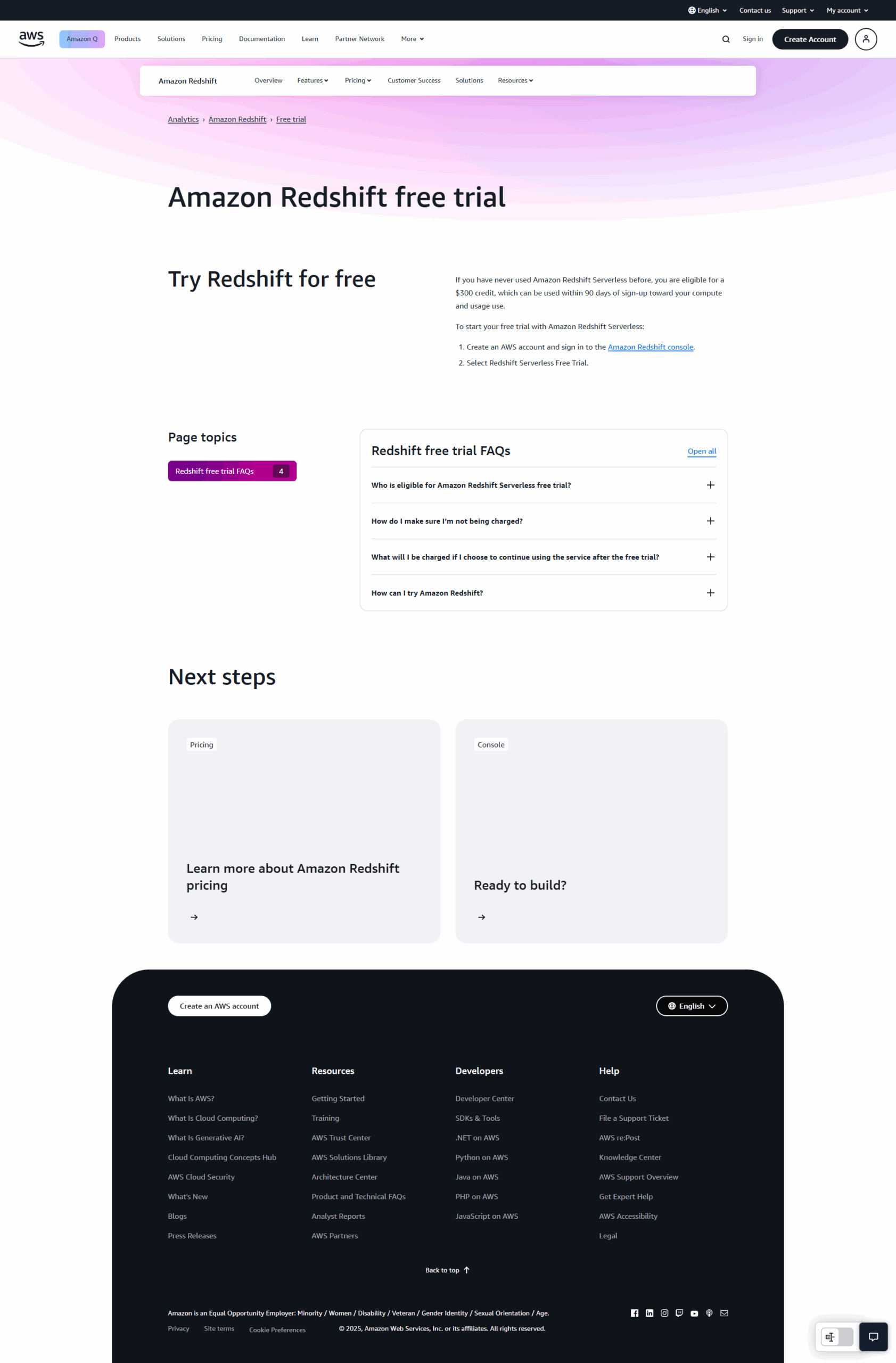Amazon Redshift is a fast, fully managed data warehouse designed to enable organizations to efficiently analyze vast amounts of data. Ideal for datasets ranging from a few hundred gigabytes to multiple petabytes, Amazon Redshift leverages SQL and integrates seamlessly with existing business intelligence tools, offering a cost-effective solution for comprehensive data analysis and reporting. As a cornerstone in the Data Warehousing category, it empowers businesses to consolidate data from disparate sources, enabling informed decision-making and enhanced operational efficiency.
Core Benefits
- High Performance & Scalability: Amazon Redshift distributes workloads across a scalable infrastructure, enabling rapid query execution and flexible resource management. It is built to handle high-volume data environments with ease.
- Fully Managed Service: With automated administration, backups, and maintenance, it reduces the operational overhead, letting teams focus on deriving actionable insights rather than managing infrastructure.
- Cost Efficiency: By operating at a fraction of traditional data warehouse costs and offering various pricing plans with significant savings options, organizations can optimize their data analysis budgets without sacrificing performance.
- Seamless Integration: The service integrates with a wide array of BI tools, machine learning workflows, and data lake architectures, ensuring that companies can leverage their existing investments and scale their data ecosystem effortlessly.
Key Features
- Data Management: Consolidate, cleanse, and normalize data from various sources while benefiting from robust data integration, quality controls, and built-in analytics capabilities.
- Deployment Options: Choose between cloud or on-premise setups to align with unique organizational requirements, ensuring flexibility and control over data security and compliance.
- Enhanced Security: With sophisticated data governance, encryption protocols, and role-based authorization, Amazon Redshift ensures that your valuable data remains protected at all times.
- Storage & Compression: Efficiently store diverse data formats with advanced compression algorithms, minimizing storage costs while maximizing performance.
- Integration and Extensibility: Easily connect with AWS services and third-party applications, enabling a unified processing environment for structured and semi-structured data.
Amazon Redshift is an excellent solution for data analysts, data engineers, and business intelligence teams who require a reliable and agile data warehouse solution. Its robust performance, flexible pricing models, and extensive integration capabilities position it as a compelling option for organizations looking to gain actionable insights from their data without compromising on speed or scalability.
To explore further advantages and exclusive offers, visit the deal page. If you are evaluating alternatives, consider these noteworthy options:
Amazon Redshift stands out as an indispensable tool for any organization serious about harnessing data-driven insights while maintaining the agility to scale operations as business demands evolve. Its comprehensive features and seamless integrations make it an ideal choice for modern enterprises aiming to stay ahead in a competitive market landscape.





































